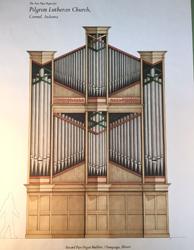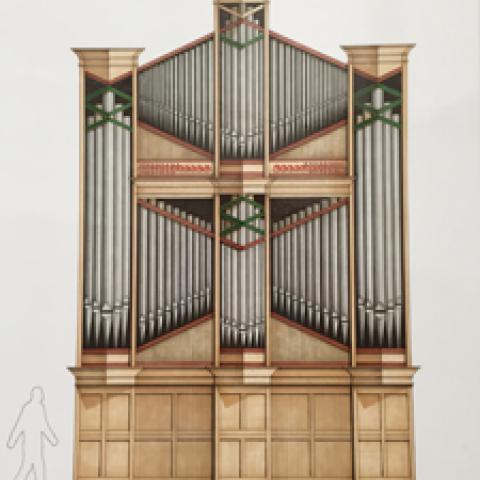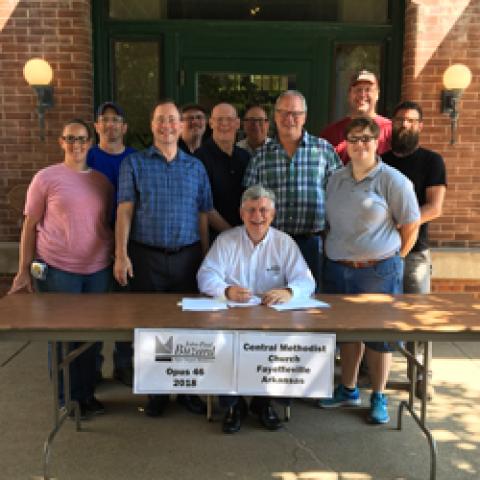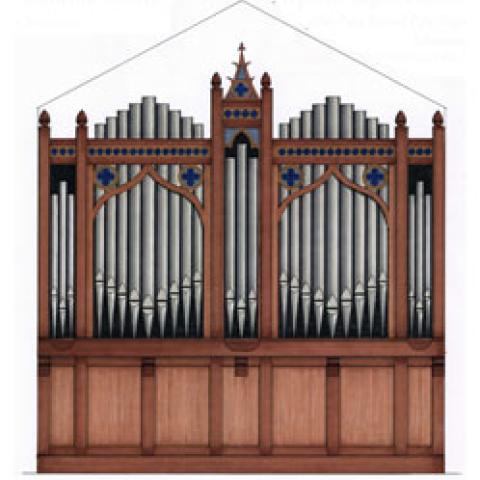
John-Paul Buzard Pipe Organ Builders has signed a contract for its Opus 45 with Pilgrim Lutheran Church (ELCA) in Carmel, Indiana. The instrument will consist of 29 independent speaking stops and 35 ranks of pipes across two manuals and pedal. The organ will be housed in a solid oak case standing nearly three stories tall, designed to relate to the Prairie Style of the church’s architecture. It will feature a set of polished copper horizontal trumpets amid the polished tin flue pipes in the façade.
The new organ will utilize Buzard’s electrically operated slider and pallet windchest actions, and a portion of the Great division will be enclosed in an expression box. The movable console will feature angled stop terraces.
Pilgrim Lutheran Church selected Buzard Pipe Organ Builders more than ten years ago to build the organ, contingent upon the congregation erecting a new church building following sale of their former properties. Buzard worked directly with architect John Munson on the building’s design. The church’s music program is directed by Cantor Sarah Gran Williams. The organ is scheduled to be installed immediately following Christmas of 2016 and will be ready for use well before Palm Sunday, 2017.
For information: buzardorgans.com.





